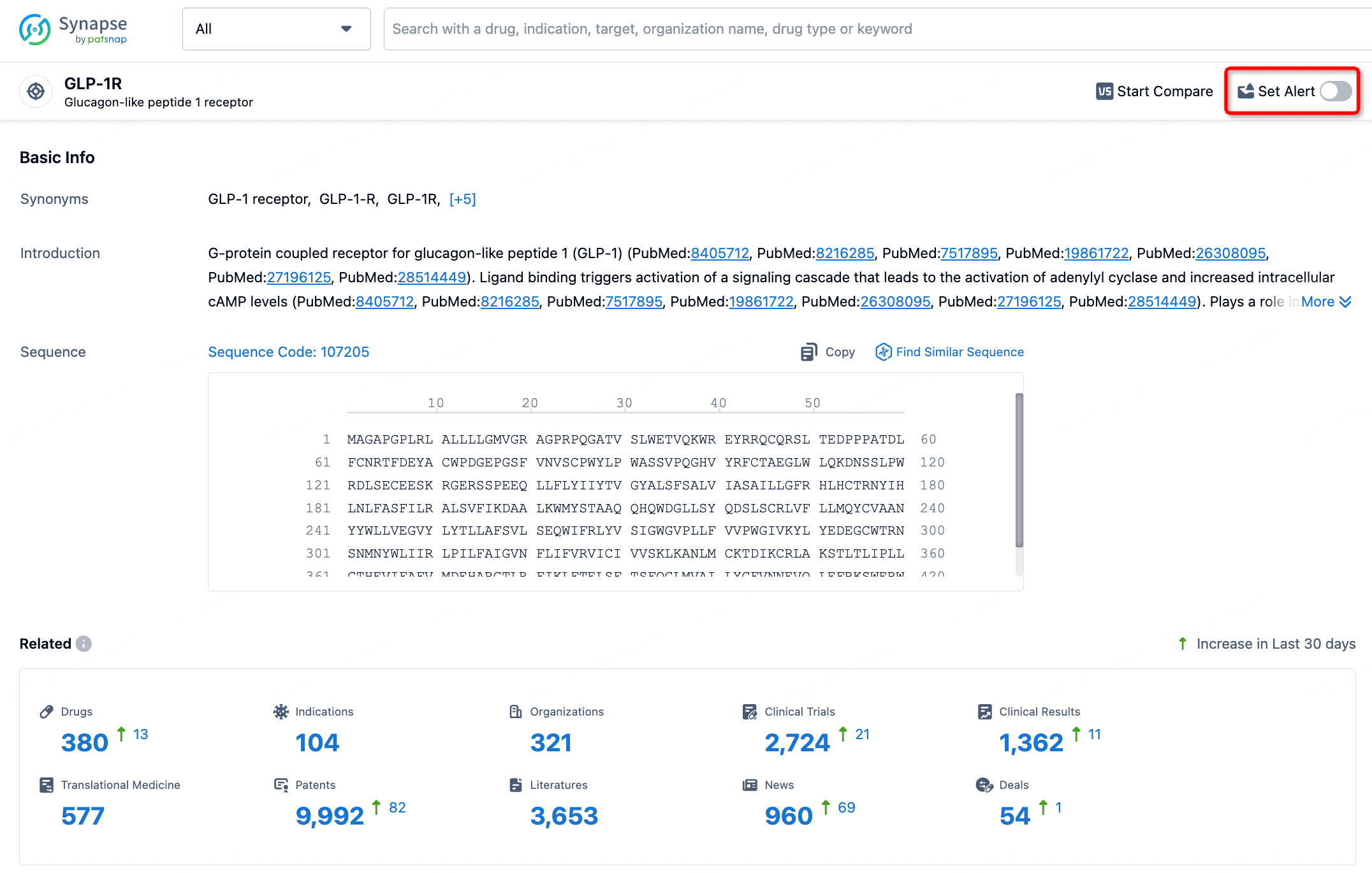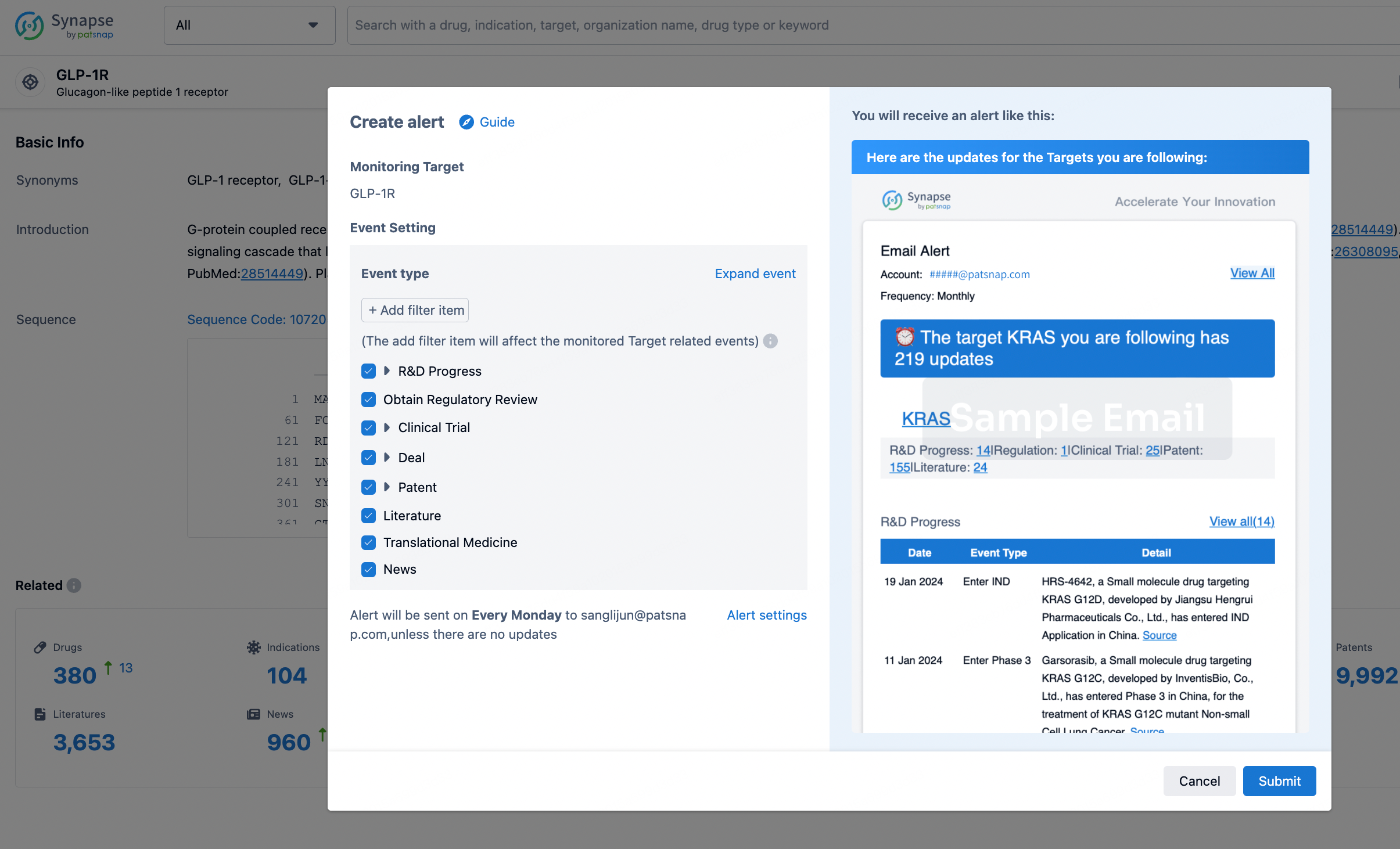Request Demo
What are STAB1 inhibitors and how do they work?
25 June 2024
In the ever-evolving field of medical science, researchers continuously seek new ways to combat various diseases, particularly cancer. One promising avenue of research involves STAB1 inhibitors. STAB1, also known as stabilin-1, is a multifunctional scavenger receptor protein that is involved in various physiological processes, including immune response regulation and clearance of dead cells. Inhibiting this protein has shown potential in combating tumors and certain immune disorders. This blog post will delve into the intricacies of STAB1 inhibitors, how they work, and their potential applications in healthcare.
STAB1 inhibitors are a class of compounds designed to block the activity of the stabilin-1 protein. Stabilin-1 is predominantly expressed in macrophages, a type of white blood cell that engulfs and digests cellular debris and pathogens. Due to its role in the immune system, stabilin-1 is implicated in various pathological conditions, including cancer and chronic inflammatory diseases. By inhibiting stabilin-1, these compounds aim to enhance the body's immune response against tumors and reduce inflammation.
The mechanism of action of STAB1 inhibitors primarily involves the disruption of the stabilin-1 protein's function. Stabilin-1 is known to bind to multiple ligands, including phosphatidylserine (PS) on the surface of apoptotic cells, facilitating their clearance by macrophages. In the context of cancer, tumor cells often exploit stabilin-1 to evade the immune system by mimicking apoptotic cells, thereby reducing their visibility to immune cells. By inhibiting stabilin-1, these compounds prevent the tumor cells from using this camouflage strategy, making them more susceptible to immune surveillance and destruction.
Moreover, stabilin-1 contributes to the suppression of the immune response by promoting an anti-inflammatory environment. Inhibitors of stabilin-1 can potentially reverse this effect, thereby boosting the immune system's ability to attack cancer cells. Additionally, STAB1 inhibitors may interfere with the protein's role in angiogenesis, the process by which new blood vessels form from pre-existing ones, which is crucial for tumor growth and metastasis. By hindering stabilin-1, these inhibitors may stifle the tumor's blood supply, limiting its growth and spread.
The potential applications of STAB1 inhibitors span a wide range of diseases, with cancer being a primary focus. Given the protein's role in immune evasion and tumor proliferation, STAB1 inhibitors could offer a novel therapeutic approach for various types of cancer. Preclinical studies have demonstrated that these inhibitors can reduce tumor growth and enhance the efficacy of existing cancer treatments, such as chemotherapy and immunotherapy. By combining STAB1 inhibitors with other therapeutic agents, researchers hope to improve patient outcomes and overcome resistance to current treatments.
Beyond oncology, STAB1 inhibitors may also hold promise in treating chronic inflammatory diseases. Stabilin-1's involvement in immune regulation suggests that its inhibition could alleviate conditions characterized by excessive inflammation, such as rheumatoid arthritis and inflammatory bowel disease. By dampening the anti-inflammatory signals mediated by stabilin-1, these inhibitors could restore a balanced immune response and reduce tissue damage associated with chronic inflammation.
Furthermore, STAB1 inhibitors could play a role in managing fibrotic diseases, where excessive tissue scarring impairs organ function. Stabilin-1 is linked to the development of fibrosis in organs such as the liver and lungs. Inhibiting the protein may help to reduce fibrosis and improve organ function in affected individuals.
In conclusion, STAB1 inhibitors represent a promising avenue of research with potential applications in oncology, chronic inflammatory diseases, and fibrosis. By targeting the stabilin-1 protein, these inhibitors aim to enhance immune responses, inhibit tumor growth, and alleviate inflammation. While much of the research is still in the preclinical stage, the early results are encouraging. As scientists continue to explore the potential of STAB1 inhibitors, they could pave the way for new, more effective treatments for a variety of debilitating diseases.
STAB1 inhibitors are a class of compounds designed to block the activity of the stabilin-1 protein. Stabilin-1 is predominantly expressed in macrophages, a type of white blood cell that engulfs and digests cellular debris and pathogens. Due to its role in the immune system, stabilin-1 is implicated in various pathological conditions, including cancer and chronic inflammatory diseases. By inhibiting stabilin-1, these compounds aim to enhance the body's immune response against tumors and reduce inflammation.
The mechanism of action of STAB1 inhibitors primarily involves the disruption of the stabilin-1 protein's function. Stabilin-1 is known to bind to multiple ligands, including phosphatidylserine (PS) on the surface of apoptotic cells, facilitating their clearance by macrophages. In the context of cancer, tumor cells often exploit stabilin-1 to evade the immune system by mimicking apoptotic cells, thereby reducing their visibility to immune cells. By inhibiting stabilin-1, these compounds prevent the tumor cells from using this camouflage strategy, making them more susceptible to immune surveillance and destruction.
Moreover, stabilin-1 contributes to the suppression of the immune response by promoting an anti-inflammatory environment. Inhibitors of stabilin-1 can potentially reverse this effect, thereby boosting the immune system's ability to attack cancer cells. Additionally, STAB1 inhibitors may interfere with the protein's role in angiogenesis, the process by which new blood vessels form from pre-existing ones, which is crucial for tumor growth and metastasis. By hindering stabilin-1, these inhibitors may stifle the tumor's blood supply, limiting its growth and spread.
The potential applications of STAB1 inhibitors span a wide range of diseases, with cancer being a primary focus. Given the protein's role in immune evasion and tumor proliferation, STAB1 inhibitors could offer a novel therapeutic approach for various types of cancer. Preclinical studies have demonstrated that these inhibitors can reduce tumor growth and enhance the efficacy of existing cancer treatments, such as chemotherapy and immunotherapy. By combining STAB1 inhibitors with other therapeutic agents, researchers hope to improve patient outcomes and overcome resistance to current treatments.
Beyond oncology, STAB1 inhibitors may also hold promise in treating chronic inflammatory diseases. Stabilin-1's involvement in immune regulation suggests that its inhibition could alleviate conditions characterized by excessive inflammation, such as rheumatoid arthritis and inflammatory bowel disease. By dampening the anti-inflammatory signals mediated by stabilin-1, these inhibitors could restore a balanced immune response and reduce tissue damage associated with chronic inflammation.
Furthermore, STAB1 inhibitors could play a role in managing fibrotic diseases, where excessive tissue scarring impairs organ function. Stabilin-1 is linked to the development of fibrosis in organs such as the liver and lungs. Inhibiting the protein may help to reduce fibrosis and improve organ function in affected individuals.
In conclusion, STAB1 inhibitors represent a promising avenue of research with potential applications in oncology, chronic inflammatory diseases, and fibrosis. By targeting the stabilin-1 protein, these inhibitors aim to enhance immune responses, inhibit tumor growth, and alleviate inflammation. While much of the research is still in the preclinical stage, the early results are encouraging. As scientists continue to explore the potential of STAB1 inhibitors, they could pave the way for new, more effective treatments for a variety of debilitating diseases.
How to obtain the latest development progress of all targets?
In the Synapse database, you can stay updated on the latest research and development advances of all targets. This service is accessible anytime and anywhere, with updates available daily or weekly. Use the "Set Alert" function to stay informed. Click on the image below to embark on a brand new journey of drug discovery!
AI Agents Built for Biopharma Breakthroughs
Accelerate discovery. Empower decisions. Transform outcomes.
Get started for free today!
Accelerate Strategic R&D decision making with Synapse, PatSnap’s AI-powered Connected Innovation Intelligence Platform Built for Life Sciences Professionals.
Start your data trial now!
Synapse data is also accessible to external entities via APIs or data packages. Empower better decisions with the latest in pharmaceutical intelligence.


